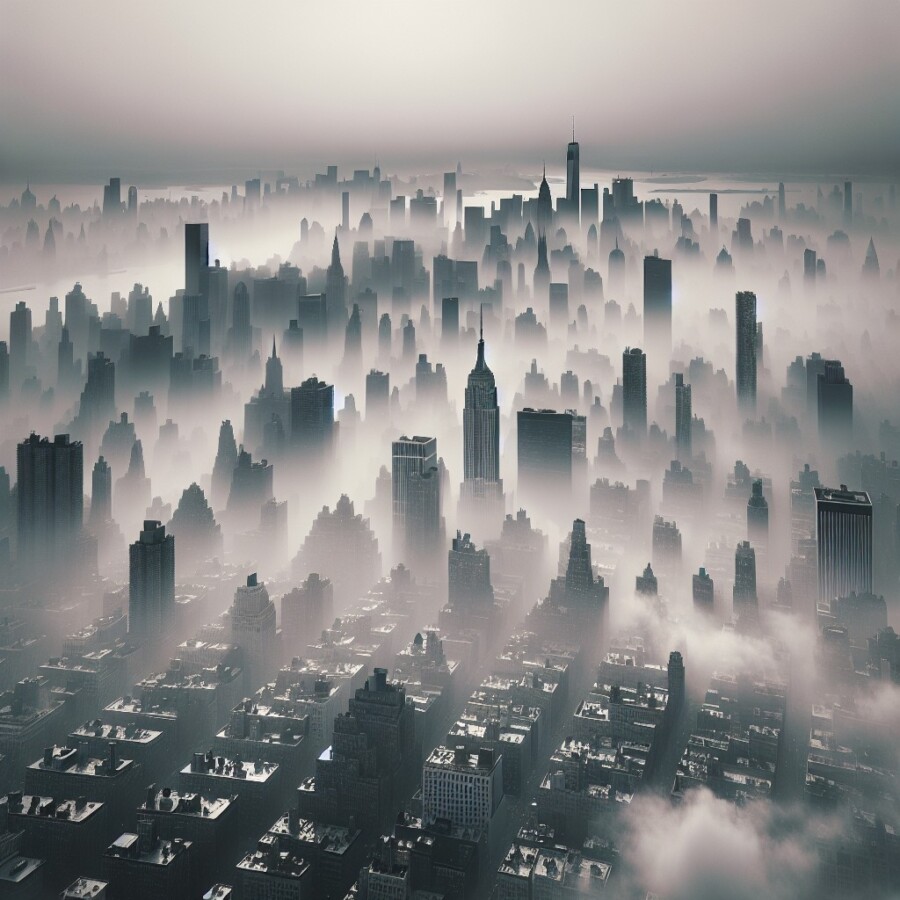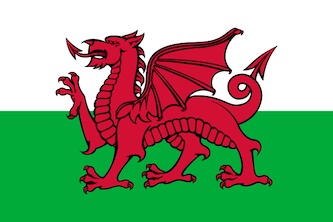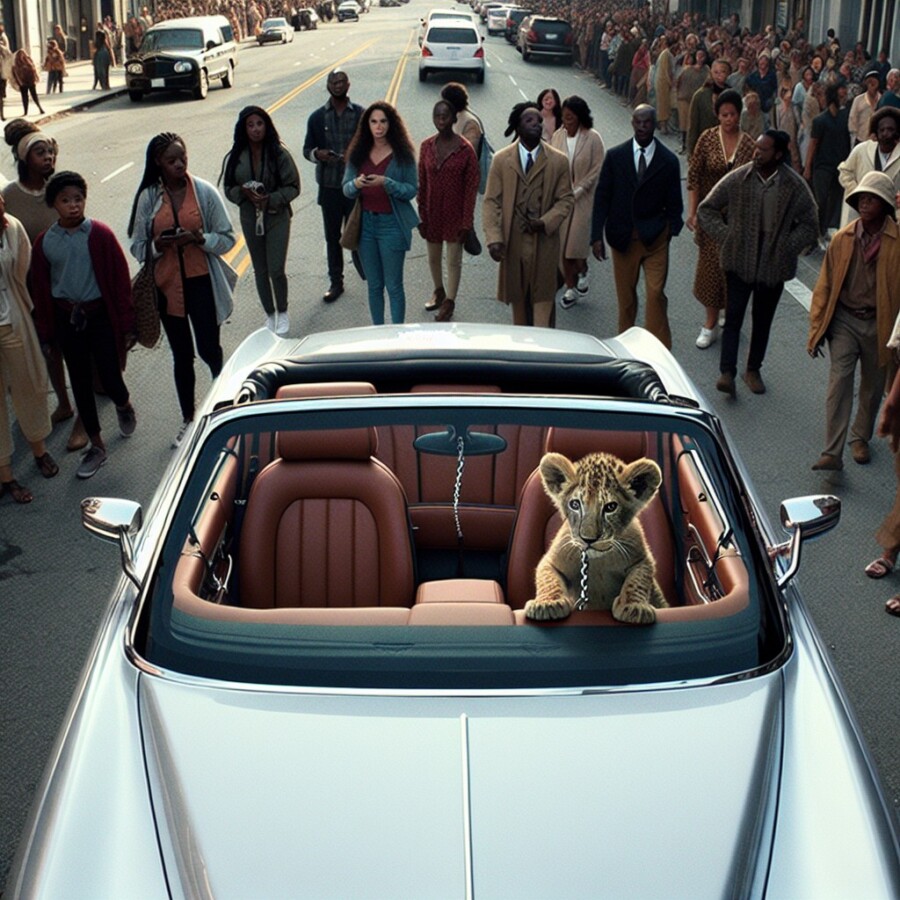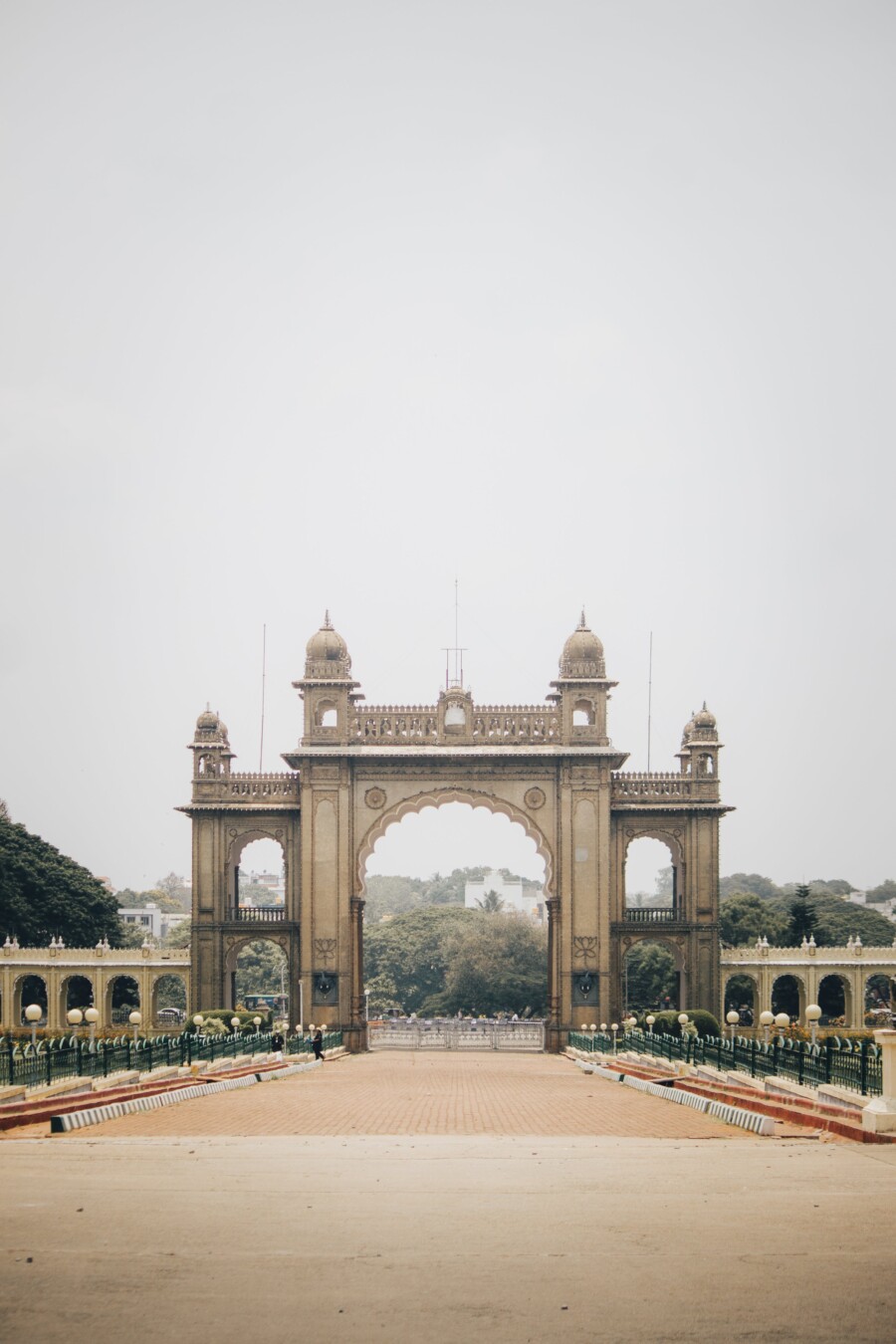On Tuesday morning, New York City was covered in a thick fog, making it look like it was floating in the clouds. This kind of fog happens when winds from the east blow over cold water and then move over the city. The fog was made by the winds and the cold water. It made the city look different and hard to see.
The fog made it hard to see the tall buildings in the city, making everything look like a dream. It was hard for people to see well, so driving was tricky. But, some people thought the city looked very special in the fog. They enjoyed seeing it this way.
This fog happens near the coast, especially when it gets warmer and there’s a big difference in temperature between the land and the sea. It happens when warm, wet air goes over something cold and turns into fog. The fog can make things look pretty but can also make it hard to go places or do things outside.
Original news source: Dense fog transforms New York into a city on clouds (BBC)
🎧 Listen:
Slow
Normal
Fast
📖 Vocabulary:
| 1 | fog | A thick cloud close to the ground that makes it hard to see |
| 2 | coast | The part of the land near the sea |
| 3 | temperature | How hot or cold something is |
| 4 | dream | Something you see, feel, or experience while sleeping |
| 5 | tricky | Hard to do or deal with |
| 6 | special | Different in a good way; not ordinary |
| 7 | enjoy | To like something or have a good time doing it |
| 8 | warm | A little hot; not cold |
| 9 | wet | Covered with water or another liquid; not dry |
| 10 | pretty | Nice to look at; beautiful |
| 11 | difficult | Not easy; needing a lot of effort or skill |
| 12 | outside | In the open air; not inside a building |
Group or Classroom Activities
Warm-up Activities:
– Charades
Instructions: Divide the class into two teams. Give each team a word or phrase related to the article (e.g. fog, New York City, driving, tall buildings). One player from each team will act out the word or phrase without speaking, while their team tries to guess what it is. The team that guesses correctly gets a point. Repeat with different words or phrases.
– News Summary
Instructions: Have the students read the article individually or in pairs. Then, ask them to write a one-sentence summary of the main idea of the article. After they have finished, have them share their summaries with a partner and discuss any differences or similarities.
– Vocabulary Pictionary
Instructions: Create a list of vocabulary words from the article (e.g. fog, temperature, coast, special). Divide the class into pairs. One student from each pair will choose a word and draw a picture to represent it, while the other student tries to guess the word. After a certain amount of time, switch roles. The pair with the most correct guesses wins.
– Speed Summarizing
Instructions: Divide the class into small groups. Give each group a copy of the article. Set a timer for 5 minutes. In that time, the students must work together to summarize the main points of the article. After the time is up, ask each group to share their summary with the class. Encourage them to use their own words and not just copy from the article.
– Future Predictions
Instructions: Discuss with the class the concept of fog and how it is formed. Ask the students to think about how fog might affect different aspects of daily life (e.g. transportation, tourism, outdoor activities). In pairs or small groups, have the students make predictions about how fog might impact these areas in the future. They can write their predictions or present them orally to the class. Encourage them to use vocabulary and phrases related to the article.
🤔 Comprehension Questions:
1. What happened to New York City on Tuesday morning?
2. Why did the city look like it was floating in the clouds?
3. How was driving affected by the fog?
4. Did everyone think the city looked special in the fog?
5. When does this kind of fog usually happen?
6. What causes the fog to form?
7. What are some of the effects of the fog?
Go to answers ⇩
🎧✍️ Listen and Fill in the Gaps:
On Tuesday (1)______, New York (2)______ was covered in a thick fog, making it look like it was floating in the clouds. This kind of fog happens when winds from the east blow over cold (3)______ and then move over the city. The fog was (4)______ by the winds and the cold water. It made the (5)______ look (6)______ and hard to see.
The fog made it hard to see the tall buildings in the city, making everything look like a dream. It was hard for people to see well, so (7)______ was (8)______. But, some people (9)______ the city looked very special in the fog. They enjoyed seeing it this way.
This fog happens near the coast, especially when it gets warmer and there’s a big difference in temperature between the land and the sea. It happens when warm, wet air goes over something (10)______ and turns into fog. The fog can make (11)______ look pretty but can also make it (12)______ to go places or do things outside.
Go to answers ⇩
💬 Discussion Questions:
Students can ask a partner these questions, or discuss them as a group.
1. What is fog?
2. How would you feel if you woke up and your whole city was covered in fog?
3. Do you like the way the city looked in the fog? Why or why not?
4. Have you ever seen fog before? What was it like?
5. How do you think the fog made it hard for people to drive?
6. Do you think it would be fun to walk in the fog? Why or why not?
7. What do you think it means when the article says the fog made everything look like a dream?
8. How do you think the fog made the city look different?
9. What do you think is special about seeing the city in the fog?
10. Have you ever been in a situation where it was hard to see because of fog or something else? What happened?
11. Do you think fog is beautiful or scary? Why?
12. Why do you think the article says the fog can make it hard to go places or do things outside?
Individual Activities
📖💭 Vocabulary Meanings:
Match each word to its meaning.
Words:
1. fog
2. coast
3. temperature
4. dream
5. tricky
6. special
7. enjoy
8. warm
9. wet
10. pretty
11. difficult
12. outside
Meanings:
(A) How hot or cold something is
(B) Nice to look at; beautiful
(C) A thick cloud close to the ground that makes it hard to see
(D) Covered with water or another liquid; not dry
(E) To like something or have a good time doing it
(F) Different in a good way; not ordinary
(G) Not easy; needing a lot of effort or skill
(H) Something you see, feel, or experience while sleeping
(I) The part of the land near the sea
(J) In the open air; not inside a building
(K) A little hot; not cold
(L) Hard to do or deal with
Go to answers ⇩
🔡 Multiple Choice Questions:
1. What caused the fog in New York City?
(a) Hot air from the west
(b) Rainfall in the city
(c) Pollution from cars
(d) Winds from the east blowing over cold water
2. How did the fog make the city look?
(a) Like it was on fire
(b) Like it was floating in the clouds
(c) Like it was covered in snow
(d) Like it was underwater
3. Why was driving difficult in the fog?
(a) It was hard to see well
(b) The roads were icy
(c) There were too many cars on the road
(d) The traffic lights were not working
4. How did some people feel about the fog?
(a) They were scared and stayed indoors
(b) They thought the fog was dangerous
(c) They thought the fog was caused by pollution
(d) They thought the city looked special and enjoyed seeing it that way
5. When does this kind of fog usually happen?
(a) Near the coast when it gets warmer and there’s a big temperature difference between the land and the sea
(b) In the mountains during the winter
(c) In the desert during a sandstorm
(d) In the countryside during a thunderstorm
6. What happens when warm, wet air goes over something cold?
(a) It becomes very windy
(b) It starts to rain
(c) It turns into fog
(d) It causes a heatwave
7. What are some of the effects of fog?
(a) It can make people sick
(b) It can make things look pretty but can also make it hard to go places or do things outside
(c) It can cause earthquakes
(d) It can make the temperature rise
8. Where does this kind of fog usually happen?
(a) In the mountains
(b) In the desert
(c) Near the coast
(d) In the countryside
Go to answers ⇩
🕵️ True or False Questions:
1. Cool, dry air turns into fog when it goes over something hot.
2. New York City was covered in a thick fog on Tuesday morning.
3. This kind of fog happens near the coast when the temperature difference between the land and the sea is big.
4. The fog made it easy to see the tall buildings in the city.
5. The fog can make things look eerie, but it can also make it easy to go outside and do things.
6. The fog was caused by winds from the east blowing over cold water and moving over the city.
7. Driving in the fog was tricky because it was hard to see well.
8. Some people thought the city looked ordinary and disliked seeing it in the fog.
Go to answers ⇩
📝 Write a Summary:
Write a summary of this news article in two sentences.
Writing Questions:
Answer the following questions. Write as much as you can for each answer.
1. What happened to New York City on Tuesday morning?
2. How does the fog make the city look different?
3. Why was driving tricky in the fog?
4. When does this kind of fog happen near the coast?
5. What are some of the effects of the fog?
✅ Answers
🤔✅ Comprehension Question Answers:
1. What happened to New York City on Tuesday morning?
New York City was covered in a thick fog on Tuesday morning.
2. Why did the city look like it was floating in the clouds?
The city looked like it was floating in the clouds because of the thick fog caused by winds from the east blowing over cold water and moving over the city.
3. How was driving affected by the fog?
Driving was tricky because the fog made it hard to see well.
4. Did everyone think the city looked special in the fog?
No, not everyone thought the city looked special in the fog. Some people enjoyed seeing it this way, but others may have found it difficult or inconvenient.
5. When does this kind of fog usually happen?
This kind of fog usually happens near the coast, especially when it gets warmer and there’s a big difference in temperature between the land and the sea.
6. What causes the fog to form?
The fog forms when warm, wet air goes over something cold and turns into fog.
7. What are some of the effects of the fog?
Some effects of the fog are that it can make things look pretty but also make it hard to go places or do things outside.
Go back to questions ⇧
🎧✍️✅ Listen and Fill in the Gaps Answers:
(1) morning
(2) City
(3) water
(4) made
(5) city
(6) different
(7) driving
(8) tricky
(9) thought
(10) cold
(11) things
(12) hard
Go back to questions ⇧
📖💭✅ Vocabulary Meanings Answers:
1. fog
Answer: (C) A thick cloud close to the ground that makes it hard to see
2. coast
Answer: (I) The part of the land near the sea
3. temperature
Answer: (A) How hot or cold something is
4. dream
Answer: (H) Something you see, feel, or experience while sleeping
5. tricky
Answer: (L) Hard to do or deal with
6. special
Answer: (F) Different in a good way; not ordinary
7. enjoy
Answer: (E) To like something or have a good time doing it
8. warm
Answer: (K) A little hot; not cold
9. wet
Answer: (D) Covered with water or another liquid; not dry
10. pretty
Answer: (B) Nice to look at; beautiful
11. difficult
Answer: (G) Not easy; needing a lot of effort or skill
12. outside
Answer: (J) In the open air; not inside a building
Go back to questions ⇧
🔡✅ Multiple Choice Answers:
1. What caused the fog in New York City?
Answer: (d) Winds from the east blowing over cold water
2. How did the fog make the city look?
Answer: (b) Like it was floating in the clouds
3. Why was driving difficult in the fog?
Answer: (a) It was hard to see well
4. How did some people feel about the fog?
Answer: (d) They thought the city looked special and enjoyed seeing it that way
5. When does this kind of fog usually happen?
Answer: (a) Near the coast when it gets warmer and there’s a big temperature difference between the land and the sea
6. What happens when warm, wet air goes over something cold?
Answer: (c) It turns into fog
7. What are some of the effects of fog?
Answer: (b) It can make things look pretty but can also make it hard to go places or do things outside
8. Where does this kind of fog usually happen?
Answer: (c) Near the coast
Go back to questions ⇧
🕵️✅ True or False Answers:
1. Cool, dry air turns into fog when it goes over something hot. (Answer: False)
2. New York City was covered in a thick fog on Tuesday morning. (Answer: True)
3. This kind of fog happens near the coast when the temperature difference between the land and the sea is big. (Answer: True)
4. The fog made it easy to see the tall buildings in the city. (Answer: False)
5. The fog can make things look eerie, but it can also make it easy to go outside and do things. (Answer: False)
6. The fog was caused by winds from the east blowing over cold water and moving over the city. (Answer: True)
7. Driving in the fog was tricky because it was hard to see well. (Answer: True)
8. Some people thought the city looked ordinary and disliked seeing it in the fog. (Answer: False)
Go back to questions ⇧












